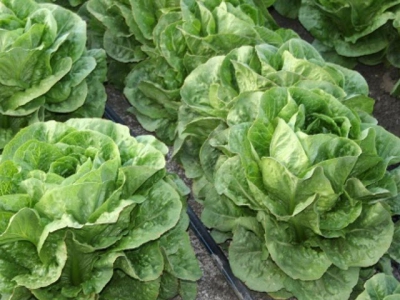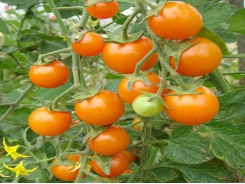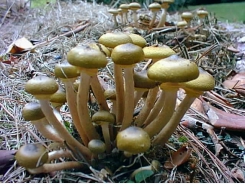IPM for cabbage aphids

When it comes to cabbage aphids and Integrated Pest Management (IPM), success will depend on the crop being grown, the season and other considerations.
You also need to remember that, when it comes to IPM, we’re not talking about ‘zero tolerance’. You’ll invariably find small populations of aphids at some stage or other. There is one exception to this, which I will discuss later. There are two main species to deal with – the cabbage aphid, which is grey, and the false cabbage aphid, which is blue/green. The cabbage aphid is more active in the cooler months and you’ll usually find colonies on single plants in autumn.
At this time of the year, these plants build up a large population before winged versions are produced and migrate to other plants. This aphid affects all the species of the cabbage family. It usually starts on the underside of leaves, causing them to curl, thereby protecting the aphids to some extent. White blemishes are left on the leaves and remain long after the aphids have been killed off.
Enemies
Natural enemies include the adult and larva stage of ladybirds, the lacewing and syrphid larvae. The latter are green maggots, which can be seen among aphid colonies and are the larvae of hoverflies. Then there are parasitic wasps (parasitoids) which inject a single egg into an aphid. This becomes ‘mummified’, and you can clearly see the round holes where the wasps emerge from these silvery-coloured ‘mummies’ when mature.
All of these play a role in controlling the aphids, but in winter in cold areas, their life cycles slow down, whereas the aphids keep going strong, as it were, and some intervention will be necessary. After 50 years of growing brassicas, I think I can say with some confidence that cabbage aphids can’t be fully controlled by their natural enemies. If you use a systemic product such as Pirimicarb, you’ll take out most, or all of the aphids and do little damage to the biological control agents mentioned.
In fact, this leaves the predators to seek aphids in areas which were difficult to reach with the insecticide. Organic growers are obliged to use non-toxic substances such as soaps, and so on, which can be effective by breaking down the surface tension of the water, causing aphids to suffocate. This does mean a very thorough wetting is required, which is difficult to achieve when the leaves are rolled over with the aphids within. The method can also kill beneficial insects.
There are also commercial fungus species which attack aphids and many other insect species when sprayed onto the crop. But the climatic conditions must be conducive to the proliferation of the fungus, and beneficial insects are also killed off. To reiterate, while organic growers may not use any toxic products, Pirimicarb is my first choice if you simply wish to produce a crop successfully, with easy aphid control.
And if you’re conscious of residues, you can greatly extend the withholding period before harvest. In this way, the beneficial insects will still be able to do their work. The false cabbage aphid, meanwhile, is rather uncommon in commercial lands, and prefers the warmer months. It usually starts on the lower leaves, but can cover the whole plant. It’s far less conspicuous than the cabbage aphid and doesn’t cause the leaves to roll. You usually first notice it on the edge of the land, where plants start to become stunted. It’s more easily controlled, as at the time of the year when it appears, ladybirds and other predators are much more active.
Exception
There are times when we should exercise zero tolerance with aphids, however – and that’s when cauliflower mosaic virus is in the area. One infected plant which is developing winged adults can infect many thousands of plants in the land. These are easily spotted, as they’re a lighter colour and the virus renders them vulnerable to downy mildew as well.
Related news
Tools

Phối trộn thức ăn chăn nuôi

Pha dung dịch thủy canh

Định mức cho tôm ăn

Phối trộn phân bón NPK

Xác định tỷ lệ tôm sống

Chuyển đổi đơn vị phân bón

Xác định công suất sục khí

Chuyển đổi đơn vị tôm

Tính diện tích nhà kính

Tính thể tích ao




 Pests and Diseases of Lettuces
Pests and Diseases of Lettuces  Expert Advice for Green House Gardening – Making…
Expert Advice for Green House Gardening – Making…